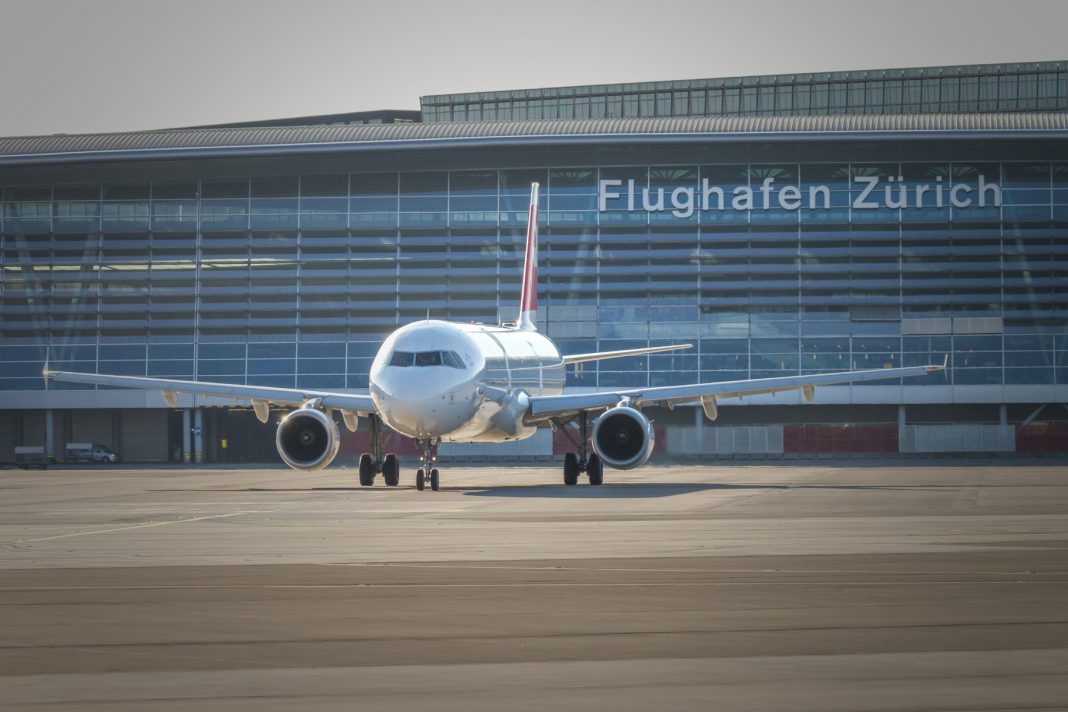Summer 2025 proved another time of peak passenger travel for SWISS and for Zurich Airport Ltd., the operator of the airline’s prime Zurich hub. More than 3.2 million air travelers passed through Zurich in July, some 4.8% more than had done so the previous year. SWISS alone transported 1.8 million passengers in July, and carried just over three million travelers between the end of June and mid-August – 2.4% more than it had in summer 2024. The airline operated almost 22,500 flights during this period, some 500 more than in the same period last year. The busiest travel day for both Zurich Airport and SWISS was Monday 28 July, when the airport hosted 115,547 travelers, 63,460 of whom were transported by SWISS – numbers not previously seen since the end of the COVID pandemic.
The most popular SWISS destinations this summer were London, Palma de Mallorca and Munich on the short-haul network, and New York, Chicago and Boston on the long-haul front. From Zurich Airport more broadly, Palma de Mallorca, Istanbul, Lisbon, Rome, Vancouver and Tokyo were in particularly strong demand. Zurich Airport Ltd. reports that a relatively low 26.9% of all passengers used the airport to transfer between flights, so the vast majority of its air travel users had Zurich (and Switzerland) as their point of original departure or their final destination.
Actions taken to improve punctuality
Zurich Airport and SWISS teamed up with their further airport partners to take a range of actions to meet and master the challenges posed by the high summer air travel volumes. One key tool in such endeavors is the Airport Operations Plan or AOP, which has been in use now for more than a year. The AOP provides all the partners involved – who now extend to over 4,800 active users – with real-time information that can be accessed by mobile phone at any time, on matters ranging from changed departure gates to the latest weather conditions. The AOP allows its users to respond more swiftly to any of various situations, ideally before passengers have even noticed the issue concerned.
Trials have also been conducted recently of a new Target Time Management System or TTMS, which optimizes flight arrival times in the event of system congestion, and will also determine the best landing sequence (to minimize delays and disruptions) for the flights concerned.
In further preparatory actions, Zurich Airport provided travelers with more self-service baggage tagging machines, while SWISS created its new ground function of Turnaround Managers to coordinate all the various processes that an aircraft is involved in between its arrival on one flight and its departure on the next, whose work helped save valuable minutes on numerous aircraft turnarounds throughout the summer months.
All these efforts served to stabilize processes and procedures, reduce wait times and minimize delays. In a further such measure, an additional meteorologist was employed for the airport to provide even more precise and updated weather forecasts for its flight operations.
More punctual, and more reliable, too
The various actions taken translated into year-on-year improvements in all key operating metrics. “The results we achieved this summer show that our investments and our actions have borne fruit and provided greater stability and reliability for both our travelers and our operations,” confirms Stefan Tschudin, Chief Operating Officer of Zurich Airport Ltd.
SWISS achieved a further sizeable improvement in the punctuality of its flights. The 58.6% systemwide on-time performance recorded for the period between the end of June and mid-August was a full 9.8 percentage points up on the prior-year period. In addition, the company almost halved the number of short-notice flight cancellations during this period, giving its customers greater schedule reliability.
“We are satisfied with the substantial improvements that we achieved in our on-time performance,” says Oliver Buchhofer, Chief Operating Officer at SWISS. “The numerous actions we took in preparation for the summer have clearly paid off, and this shows us that we’re on the right track. We are well aware, though, that a high-summer punctuality of just under 58.6 per cent is not one that we should content ourselves with. We aim to get even better; and we aim to continue to work on our actions and our processes.”
“At the same time,” Buchhofer continues, “external factors over which we have no control are causing us more concern than ever. Some 70 percent of all delays, for instance, are attributable to air traffic control capacity shortages or to European weather conditions.”
For all flight movements at Zurich Airport, on-time performance in July amounted to 51%, which was a nine-percentage-point improvement on the prior-year period. January-to-July on-time performance for the airport as a whole stood at 65%. The number of flight movements at the airport after 23:00 has seen a substantial decline, with 21.1% fewer departures and 19.5% fewer landings.
Peak season for personnel
As Stefan Tschudin and Oliver Buchhofer agree, a key factor in the success of Zurich Airport’s 2025 high-summer operating season was the many dedicated personnel who handled the airport’s operations, often under far-from-easy conditions. “I am very proud of our employees both in the air and on the ground,” confirms SWISS COO Buchhofer. “It’s thanks to their work and commitment throughout this intensive summer period that we were able to provide our passengers with better punctuality, greater reliability and more schedule stability.”
The processes at Zurich Airport worked well this summer, with 90% of all travelers passing through the security checkpoint in less than five minutes. The new baggage sorting facility also functioned largely without incident, handling over 2.3 million outbound baggage items in June and July with a minimal 0.18% of all such items failing to make their intended flights.
Hub Zurich needs stable operating parameters
Zurich is a hub airport, with waves of flights throughout the day scheduled to arrive from all over Europe and dovetail with departures to onward destinations worldwide. It is this wave system that makes Zurich a key air transport hub. Travelers benefit from conveniently short connecting times; and SWISS, by coordinating its short-haul and long-haul services, is able to operate an extensive network of non-stop flights to and from points all over the globe. At the same time, though, Zurich’s hub nature makes it more prone to delays than other airports which offer higher proportions of point-to-point connections.
“For us at SWISS, having a well-functioning home hub is crucial,” stresses COO Buchhofer. “A hub operation of this kind is the only way we can offer our customers a wide range of attractive intercontinental destinations and keep Switzerland closely connected with the world. If it weren’t for our feeder flights from all over Europe, we would be unable to operate the daily services we provide to so many of our long-haul destinations.”
It is thanks to its hub function, too, that Zurich Airport can offer the people of Switzerland the extensive air connections worldwide which are available today. In doing so, the airport also fulfils the mission assigned to it by the Swiss government of keeping Switzerland optimally connected with the world.
“Zurich Airport has worked hard with SWISS over the past few months to stabilize their operations and give their millions of passengers a dependable air travel experience,” concludes Zurich Airport COO Tschudin. “If we are to continue to do so, though – and do so even better – we must continue to enjoy stable operating parameters, along with a political will that continues to champion Zurich’s assets and appeal as a key air travel location.”


